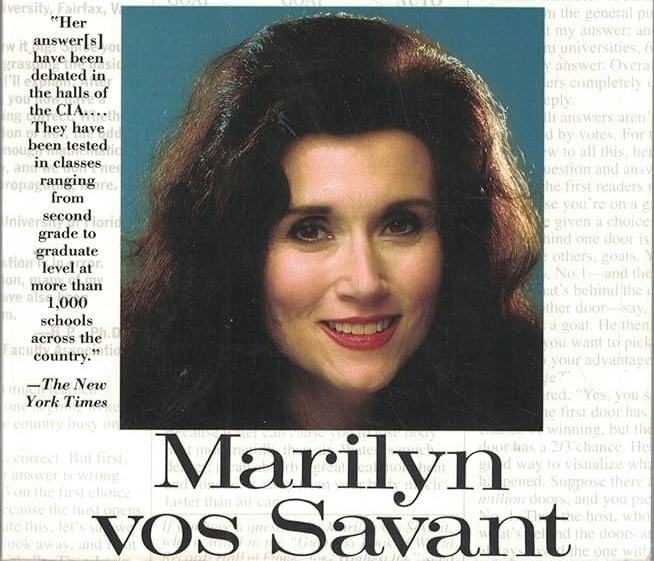
This woman holds the highest IQ record in history (228). Far surpassing Einstein (160-190), Hawking (160), or Musk (155). Yet, she was ridiculed for the answer to a seemingly simple question. However, she saw what others could not. Here is her story: Marilyn vos Savant was not an ordinary child. At the age of 10:
• She was able to remember the contents of an entire book.
• Read all 24 volumes of the Encyclopaedia Britannica.
• Set the all-time highest IQ record (228).
She was destined to be a genius.
But reality was vastly different.
"No one paid much attention to me, mostly because I was a girl, and I accepted that."
She attended a regular public school.
Dropped out after two years at the University of Washington to help run her parents' business.
Until 1985, fate took a significant turn...
(Guinness World Records) listed her as the 'Highest IQ Record Holder' with an IQ of 228.

Marilyn came into the public eye:
• Featured on the covers of major magazines like (New York Magazine) and (Parade Magazine).
• Appeared on (The Late Show with David Letterman).
She couldn't imagine what would happen next...
Marilyn found a job at (Parade Magazine) and began her famous 'Ask Marilyn' column.
For someone who loves writing, this is a dream.
But it quickly turned into a nightmare.
It all started with a question...

The Monty Hall problem, September 1990.
Named after the game show host Monty Hall.
Here are the questions she was asked:
You participated in a game show.
There are three doors in front of you.
Behind one door is a car, while the other two doors have goats.
You chose a door.
The host opened another door, revealing a goat.
Will you switch doors?
Her answer was: "Yes, you should switch."
She received over 10,000 letters, nearly 1,000 of which were from PhD holders.
90% of people think she was wrong:
• "You are that goat (fool)!"
• "You completely messed up, and big time!"
• "Perhaps women view mathematical problems differently than men."
But was she really wrong?
Consider the following two scenarios:
1. You chose the door with the car (probability 1/3):
• You switch doors, you lose.
2. You chose a door with a goat (probability 2/3):
• Monty revealed another goat.
• You switch doors, you win.
The probability of winning by switching doors is 2/3.
In the end, she was proven right...
MIT ran computer simulations that confirmed her answer.
(MythBusters) also tested to prove this.
Some scholars acknowledged their mistakes and expressed apologies.
But why is it that so many people can't see it?
The reasons are as follows:
• People often 'reset' the situation when told about a new choice.
• The small sample size (3 doors) makes the problem harder to understand.
• They assumed each door had a 50% probability.
What makes people think this way?